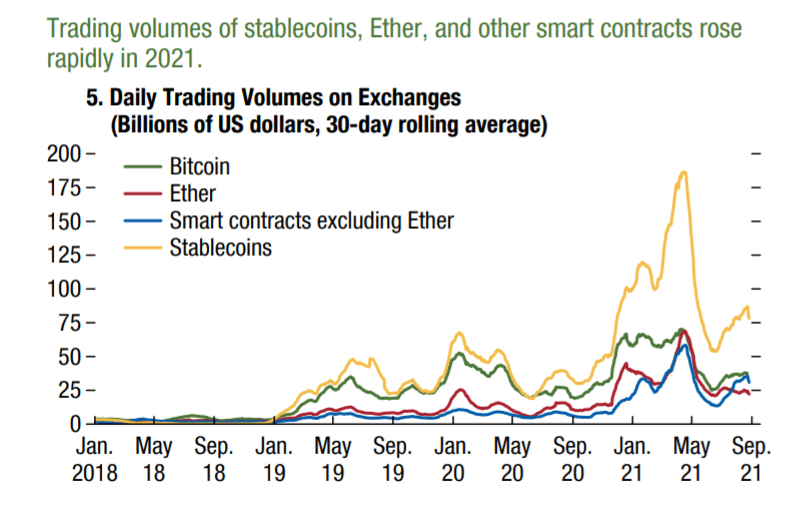Stablecoins and Next-Gen Payments: Marching Toward Institutional Adoption of DeFi in Europe

Cryptocurrencies and stablecoins will likely play a more noticeable role in the future global payments ecosystem, as consumers and businesses increasingly embrace cryptocurrencies and investments in digital currencies continue to gain ground.
Related: NEW REPORT: Capturing the Global Cryptocurrency Payments Opportunity
According to a recent PYMNTS report on global cryptocurrency use, the potential of stablecoins and next-gen payments for consumer and business payments is catching the eye of banks and other financial service providers who are looking at the potential of utility tokens and blockchain-based assets for the clearing and settlement of accounts.
Recent data from the International Monetary Fund (IMF) shows that the market capitalization of stablecoins, which are digital currencies pegged to a stable asset like the U.S. dollar in order to eliminate the high volatility of first-generation cryptocurrencies, has quadrupled to over $120 billion in 2021, with stablecoin trading volumes overtaking those of all other crypto assets.

Sources: Bloomberg Finance L.P.; Bybt; CoinGecko; CryptoCompare; DeBank; and IMF staff calculations
In the PYMNTS report, published in collaboration with digital payment and banking provider i2c, Pavel Matveev, CEO of multicurrency digital wallet and money transfer service Wirex, told PYMNTS that these digital assets — central bank digital currencies (CBDCs) and stablecoins — will eventually dominate the cryptocurrency payments space.
“To be honest, nobody will be using Bitcoin as a payment method because it serves another purpose — it’s digital gold,” Matveev said. “So, I think stablecoins and CBDCs [are two] of the main trends in the payments space. I think once we have a technology [to support them] and once we have regulation for that technology, I think that’s when we’ll see exponential growth in the [digital currency] payments space.”
Merging TradFi and DeFi
In what is considered one of the biggest steps toward institutional adoption of decentralized finance (DeFi) to date, Société Générale-Forge (SG-Forge), an affiliate of French multinational banking giant Société Générale (SocGen), has applied for a loan of up to $20 million in DAI stablecoins using bond tokens issued by the bank as collateral.
Read more: Societe Generale Taps Temenos To Modernize Corporate Banking
According to a recent CoinDesk report referencing the proposal made to MakerDAO, the organization behind the DAI U.S. dollar-pegged stablecoin, the tokens, which are recognized under French law, were issued in May 2020 at a 5-year fixed interest rate of 0% and have been assigned a AAA rating from both Moody’s and Fitch rating agencies.
“This first experiment at the crossroads between regulated and open-source initiatives […] is intended to refinance a covered bond token that has been issued last year on the Ethereum public blockchain,” SG-Forge wrote in its proposal to MakerDAO. Covered bonds are a package of loans that were first issued by banks and then resold to financial institutions.
SG-Forge added in the proposal that the loan would be a “first pilot use case” that seeks to, among other things, “integrate with one of the largest DeFi protocols” as well as “help to shape and promote an experiment under the French legal framework.”
This is not the first time the French bank is experimenting with blockchain technology, however. The European banking giant has been testing blockchain assets for years through its digital assets-focused subsidiary SG-Forge, and previously issued a 100 million euro ($116 million) covered bond as a security token directly on Ethereum’s public blockchain back in 2019.
And the fact that a major financial institution like SocGen is taking interest in stablecoins aligns with Matveev’s claim that digital assets will eventually take over the cryptocurrency payments space, possibly paving the way for MakerDAO to accept other real-world bank bonds.
“This collateral should be seen as step one of what is next to come,” Sébastien Derivaux, the head of MakerDAO’s Real World Finance unit, wrote in a reply to the proposal. “Integrating all publicly traded bonds (that will be on Ethereum as we all know) and providing repo [repurchase agreement]. Quite a huge market.”
